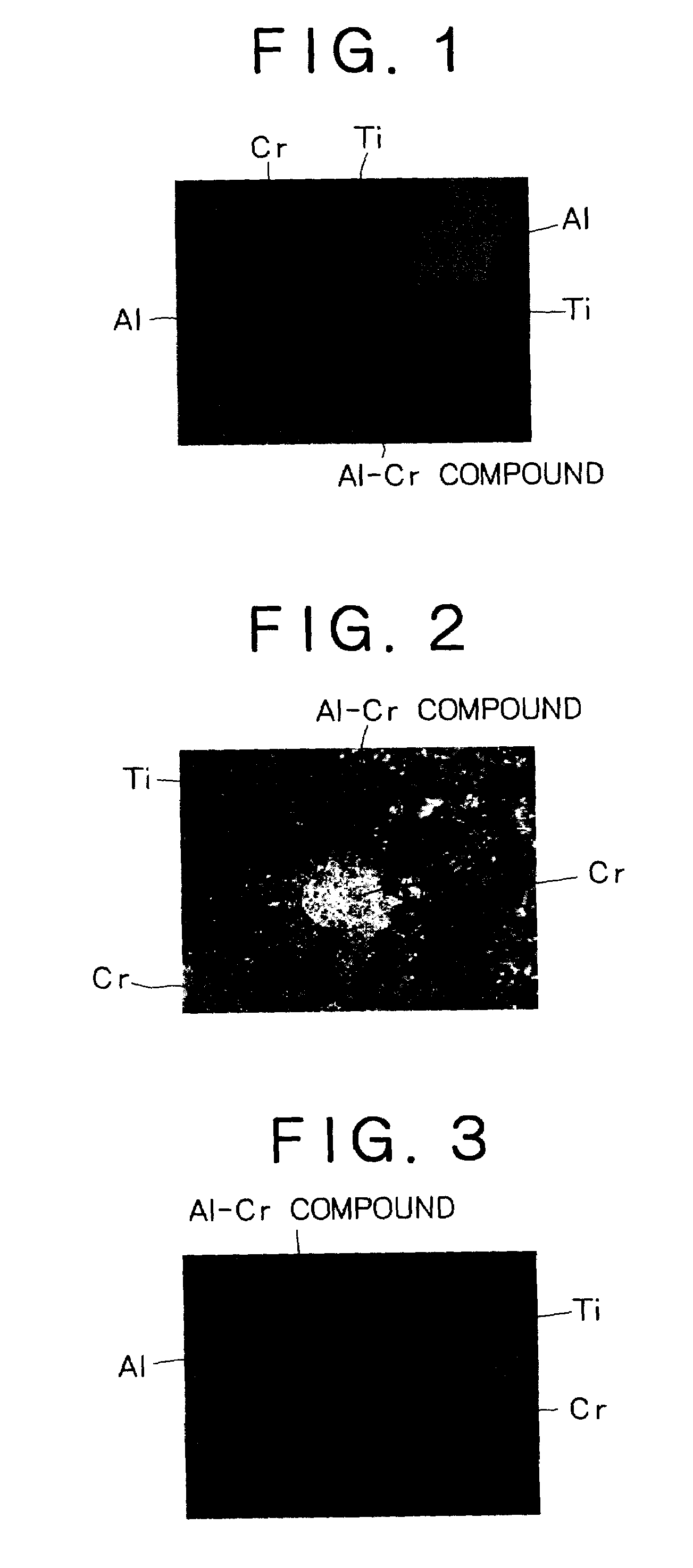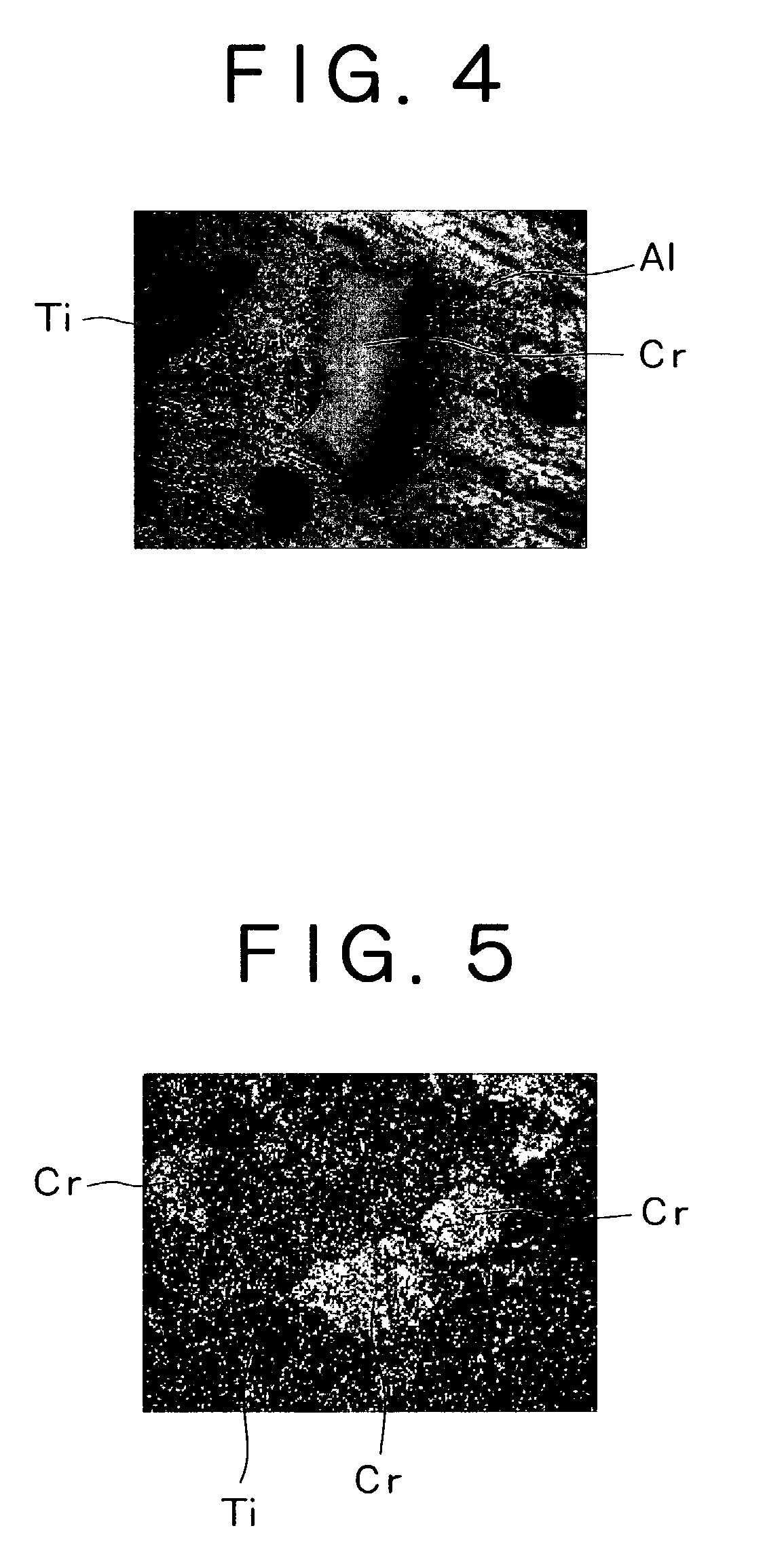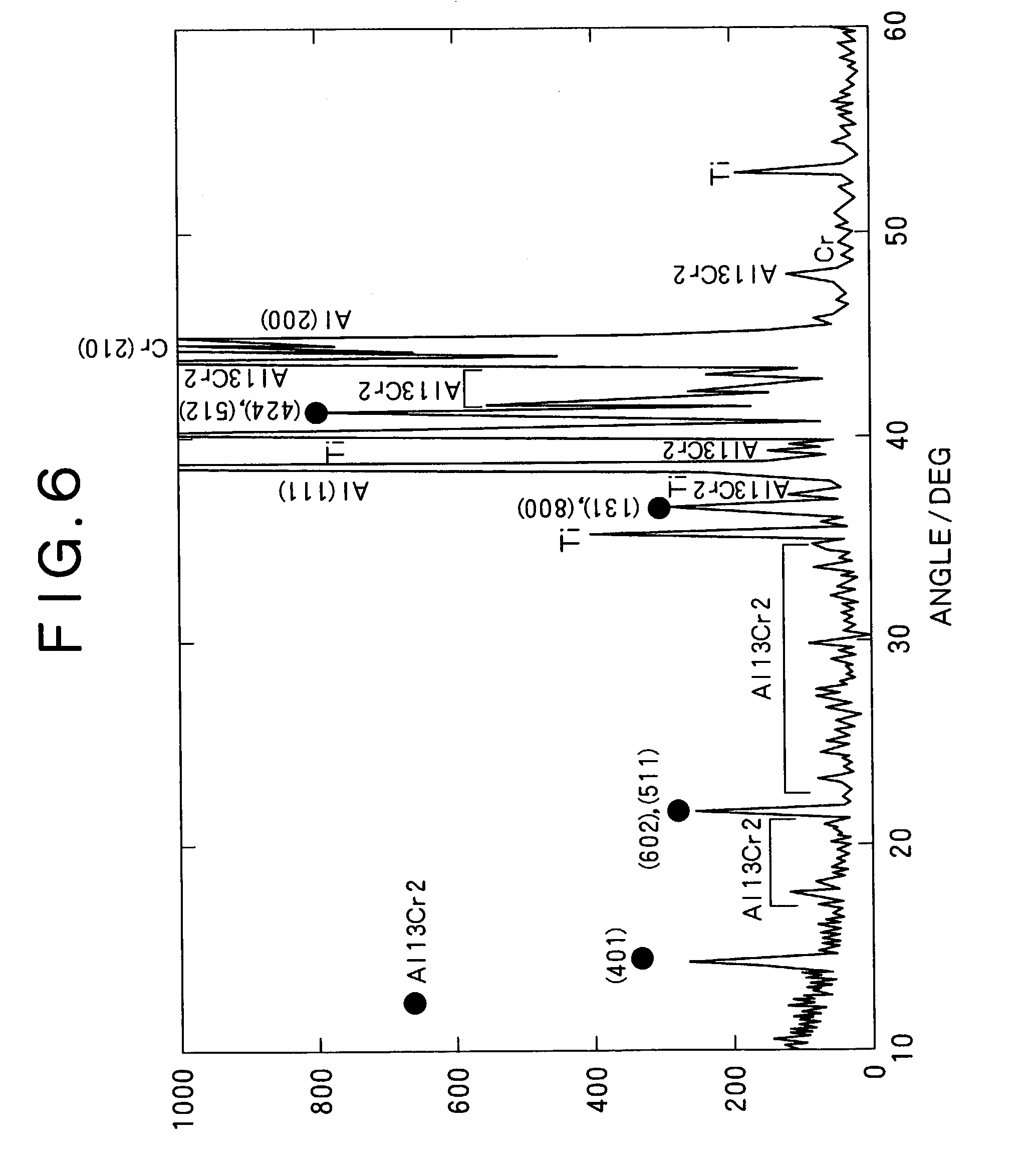Target for cathode discharging arc ion plating and method of manufacturing the same
a technology of arc ion plating and cathode, which is applied in the direction of electrolysis components, vacuum evaporation coatings, coatings, etc., can solve the problems of uneven composition and easy achieve the effects of suppressing the formation of macro particles, preventing the movement of arc spots that are not uniform, and high quality
- Summary
- Abstract
- Description
- Claims
- Application Information
AI Technical Summary
Benefits of technology
Problems solved by technology
Method used
Image
Examples
example 1
[0059]As shown in Table 1, Al—Cr and Al—Cr—Ti were selected as the target composition and target materials were prepared by HIP, hot forging or melting method under the conditions shown in the table. The thickness of the Al—Cr compound layer formed between Cr and Al in the prepared target was observed by an optical microscope at a magnifying factor of 200×, and measured by the measuring method described above. Further, the relative density was measured. The results of measurement are collectively shown in Table 1.
[0060]Targets (100 mm diameter, 16 mm thickness) were fabricated from the target materials (starting materials). The targets were attached to a cathode discharging arc ion plating apparatus and hard films of about 3 μm were formed on mirror finished super-hard alloy substrates (surface roughness Ra: about 0.01 μm) at an arc current of 150 A, under a nitrogen pressure of 2.66 Pa, at a substrate temperature of 550° C., and at a substrate voltage within a range from 50 to 150 ...
example 2
[0063]As shown in Table 2, Al—Cr was selected for the target composition and targets were manufactured by the HIP method while changing manufacturing conditions variously. The amount (ratio) of the Al—Cr compound contained in the targets was measured by the X-ray diffractiometry. The relative density in all targets was 99% or more.
[0064]Then, in the same manner as in Example 1, films were formed respectively to about 3 μm to mirror-finished super hard alloy substrates, and the surface roughness of the film was evaluated by the same method as in Example 1. The result of measurement and the result of evaluation were shown collectively in Table 2.
[0065]According to Table 2, the surface roughness of the formed films exhibited poor trend in a case of containing a great amount of Al generally having a low melting point and tending to release macro particles, whereas films of favorable surface roughness were formed in examples at a compound ratio of 10% or less in the comparison using targ...
example 3
[0067]As shown in Table 3, Al—Cr—Ti, Al—Cr—Ti—Si and Al—Cr—Ti—Si—B were selected as the target composition and targets were prepared by the HIP method at various temperature conditions as shown in Table 3 (processing pressure: 100 MPA, processing time 2 hr). The thickness of the Al—Cr compound layers contained in the prepared targets was determined by optical microscopic observation in the same manner as in Example 1. The relative densities of all the targets were 99% or more.
[0068]Nitride films were formed by an arc ion plating apparatus in the same method as in Example 1 for the prepared target, and the crystal structure of the films was identified by X-ray diffractiometry at θ-2θ, and the film hardness and the surface roughness were measured. Conditions during film deposition were at an arc current of 150 A, at a nitrogen pressure of 2.66 Pa, at a substrate temperature of 550° C. and at a substrate voltage of 150V with the film thickness being constant at about 3 μm.
[0069]The res...
PUM
| Property | Measurement | Unit |
|---|---|---|
| temperature | aaaaa | aaaaa |
| thickness | aaaaa | aaaaa |
| temperature | aaaaa | aaaaa |
Abstract
Description
Claims
Application Information
 Login to View More
Login to View More - R&D
- Intellectual Property
- Life Sciences
- Materials
- Tech Scout
- Unparalleled Data Quality
- Higher Quality Content
- 60% Fewer Hallucinations
Browse by: Latest US Patents, China's latest patents, Technical Efficacy Thesaurus, Application Domain, Technology Topic, Popular Technical Reports.
© 2025 PatSnap. All rights reserved.Legal|Privacy policy|Modern Slavery Act Transparency Statement|Sitemap|About US| Contact US: help@patsnap.com



